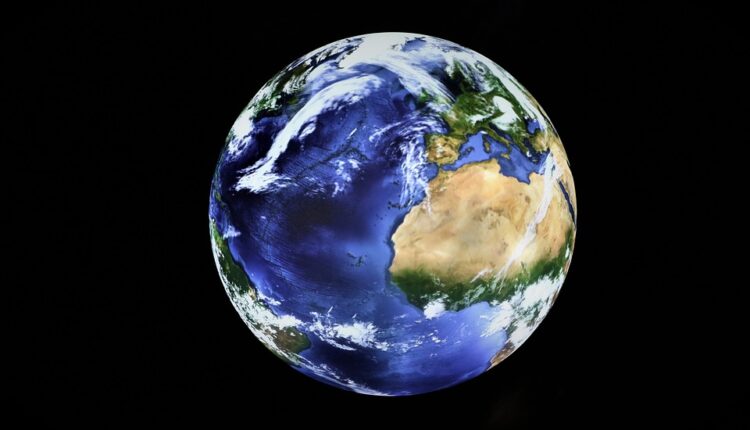Unusual rise in temperature due to climate change
India, with more than 17% of the world's population, has contributed only about 4% of the cumulative global greenhouse gas emissions between 1850 and 2019
Climate Change is a global collective action problem that has been precipitated mainly by the historical accumulated emissions of developed countries derived from disproportionate and excessive production and consumption. Advances in the science of climate change are regularly assessed by the Intergovernmental Panel on Climate Change (IPCC).
Unusual rise in temperature
The IPCC Sixth Assessment Working Group I report points to three main facts: First, the global average temperature has already increased by 1.07 degrees C since pre-industrial times. Second, we only have a certain amount of carbon budget left before we hit the 1.5°C and 2°C temperature limits mentioned in the Paris Agreement. And third, historical cumulative emissions are an important determinant of current climate change.
The carbon budget is the cumulative amount of carbon dioxide emissions allowed since the pre-industrial era to keep the increase in global average temperature, above pre-industrial levels, within a certain limit. For a 1.5 degree C warming, 83% of the carbon budget is already taken up by historical cumulative emissions through 2019. Thus, for a 1.5 degree C temperature increase target, there are only 500 Gt of carbon dioxide that the world can emit. Compared to what has aired so far, this is pretty small. While for 2 degrees C, 65% is occupied by historical cumulative emissions and 35% remains for the entire world.
Challenge of climate change
India, with more than 17% of the world’s population, has contributed only about 4% of the cumulative global greenhouse gas emissions between 1850 and 2019. India strongly believes in global cooperation to meet the challenge of climate change through multilateral processes based on the principles of equity and Common but Differentiated Responsibilities and Respective Capabilities (CBDR-RC).
Therefore, all countries must keep their emissions in their fair share of the global carbon budget and use it responsibly. At the same time, global technological development is needed to move towards a low-carbon development path, while the excessive and unsustainable lifestyles of developed countries must be immediately curbed and transformed. Simultaneously, development and adaptation are necessary to manage the impact of climate change that is already taking place.
Average temperature over India warmed
The government takes care of the matter. Studies show that the average temperature over India has warmed by around 0.7°C during 1901-2018 and a similar warming in sea surface temperature has been observed in the tropical Indian Ocean by 1°C from 1951. -2015. The temperature rise is gradual. The increase in extreme events is attributed to complex Earth system interactions due to global warming and regional anthropogenic influences.
Effects of rising temperatures
Ministry of Earth Sciences (MoES) is mandated to provide forecasts and early warnings. However, as an adaptive measure to minimize the effects of rising temperatures, the India Meteorological Department (IMD), in collaboration with local health departments, has initiated a heat action plan in many parts of the country. to warn of heat waves and also advise on measures to be taken. during such occasions. The heat action plan has been in place since 2013. The National Disaster Management Authority (NDMA) and IMD are working with 23 high-temperature-prone states at present regarding the heat action plan.
The monitoring of the glaciers is carried out by the Indian Space Research Organization (ISRO), the Geological Survey of India (GSI), the Ministry of Earth Sciences (MoES), the Defense Geoinformatics Research Establishment ( DGRE), and also through various research projects sponsored by the Department of Science and Technology (DST).
Glacial lakes and water bodies
The latter also has an autonomous institution on Himalayan geology, namely the Wadia Institute of Himalayan Geology, Dehradun. The Central Water Commission (CWC) monitors 477 glacial lakes and water bodies in the Himalayan region of India’s river basin system, which have an area of more than 50 hectares on a monthly basis in the monsoon season since 2011. Furthermore, The National Disaster Administration Authority issued guidelines entitled “Management of Glacial Lake Flash Floods (GLOF)” in October 2020, which, among other things, includes a discussion on early warning systems.
Policy framework for climate action
The Government is implementing the National Action Plan on Climate Change (NAPCC), which is the overarching policy framework for climate action in India, covering mitigation, adaptation and strategic knowledge generation on climate change. It is made up of country missions in the specific areas of solar energy, improved energy efficiency, water, agriculture, the Himalayan ecosystem, sustainable habitat, green India and climate change insights. In addition, 33 States/Union Territories have prepared State Action Plans on Climate Change (SAPCCs) consistent with the NAPCC objectives.
Contact us: If farmers want to share information or experiences related to farming with us, then they can do this by calling us on the phone number 9599273766 or by writing an email to [email protected] or by sending your recording. Through Kisan of India, we will convey your message to the people, because we believe that if the farmers are advanced then the country is happy.
You can connect with Kisan of India on Facebook, Twitter, and Whatsapp and Subscribe to our YouTube channel.



